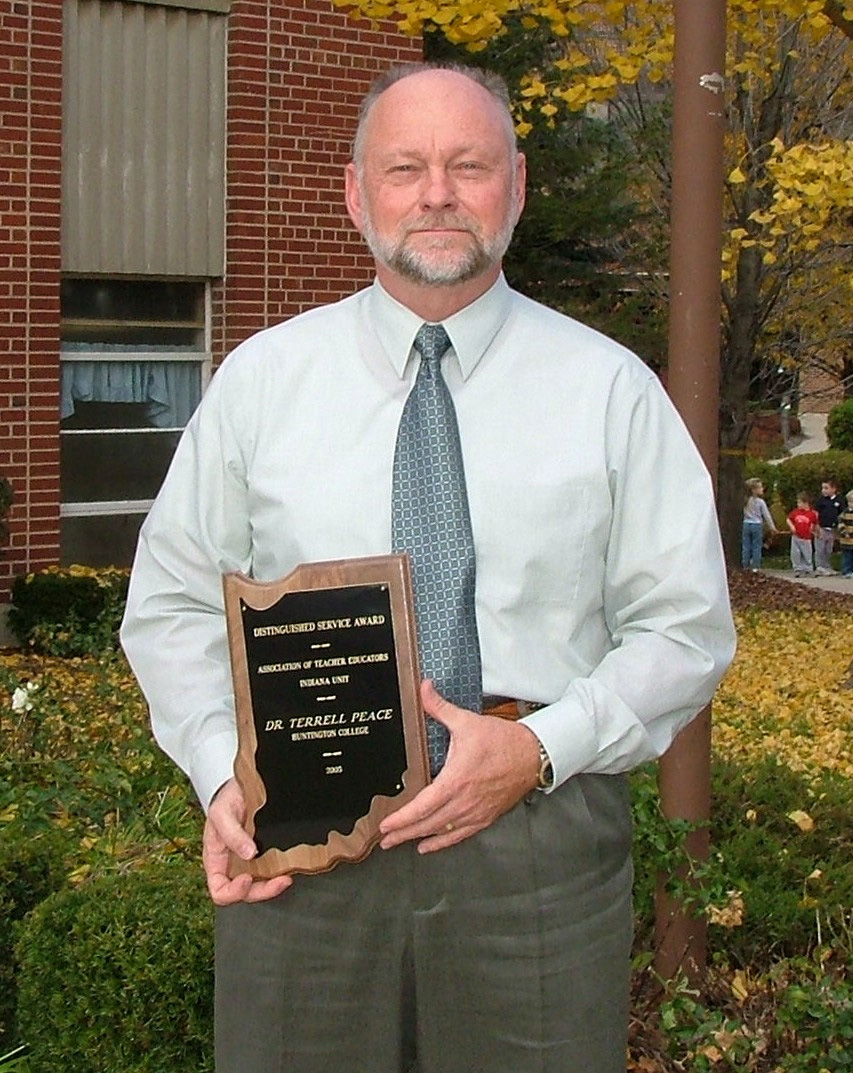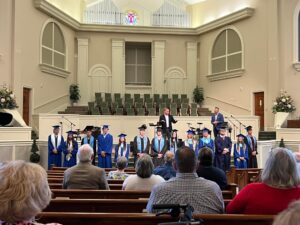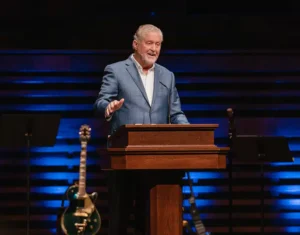
WESTLAKE, La. (BP)–The revival that drew Larry Thompson to Christ as a 17-year-old continues to influence his ministry long after he left South Carolina for pastorates in four other states.
“These are the kind of things I have attempted all through my ministry,” the pastor of First Baptist Church in Westlake, La., said. “I’ve often said that I’ve based my ministry on teaching the principles of revival, just in case the Holy Spirit decides to do it again.”
In particular, Thompson retains a strong desire to see others accept Christ. This spark was lit by his conversion in the early days of a revival that began in Easley, S.C., and a youth conference that summer sponsored by the South Carolina Baptist Convention.
In addition to lessons from the conference on prayer and personal Bible study, Thompson attended sessions on how to share his faith. By Thursday of that week, he had led his first convert to Christ and by Sunday, two dozen more.
And he wasn’t the only person from Easley who led numerous people to Jesus, Thompson said.
Reflecting on the revival, the pastor outlined four primary traits that characterized it:
— An intense dedication to the Word of God.
Counting Sunday and Wednesday nights, some participants were involved in Bible study five nights a week, Thompson said.
“Most of us carried the Bible everywhere,” Thompson said. “A lot of us got ridiculed because of that.”
— An intense desire to see other people come to Christ.
The people involved in spreading the revival knew they needed to lead their friends, co-workers and others to Christ, so they prayed and witnessed together, Thompson said.
— An intense boldness.
Thompson said once when a girl at school heard a group of football players swearing, she shouted, “Stop it! That’s my Father you’re talking about!”
As a result, the starting quarterback accepted Jesus as his Savior as did several other players, Thompson said.
— Intense loyalty.
The youth who were experiencing revival identified with each other as fellow Christians, not a denominational entity, Thompson said.
“There was nothing we wouldn’t do for each other,” he said.
Others called into ministry because of the Easley Revival have similarly fond memories, such as Dale Ellenburg, vice president of academics at Mid-America Baptist Theological Seminary near Memphis, Tenn.
In addition to his academic credentials, Ellenburg has served in pastoral roles for 24 of the past 31 years.
Currently serving as a preaching associate at Kirbywoods Baptist Church, Ellenburg attributes his love of the pulpit to the spiritual fire that touched him as a teenager.
“In 1975 I surrendered to ministry because of the spiritual excitement at the coffeehouse,” Ellenburg said, referencing the initial gathering point in Easley where the revival began. “And after 31 years in ministry, I haven’t seen anything like it.
“To this day I love teenagers and desire to see another revival among teenagers. God’s done it before. I hope He’ll do it again.”
Although he accepted Christ at the age of 9, as a teenager Ellenburg said he had strayed from God and embraced a rebellious lifestyle.
That is, until he went to the coffeehouse.
“Those people talked about a relationship with Christ that was so fresh and real,” Ellenburg said. “I had never experienced anything like that.
“Those folks led me to a firm rededication of my life [to Christ] that is as much a hallmark as my salvation at 9.”
Although he went to one of the earlier home Bible studies with a girlfriend, he didn’t visit the coffeehouse until after they broke up and a football teammate invited him.
From that night on, the Holy Spirit began working in his life, Ellenburg said.
While he recommitted his life to Christ at a meeting where evangelist Bob Harrington spoke, Ellenburg said he wouldn’t have been there if it hadn’t been for the coffeehouse group.
“At first the area churches were afraid of us,” Ellenburg said. “But little by little they began to realize [that the leader] Terry Ballenger was the real deal. He wasn’t going to let that thing get out of hand theologically.”
At the time, Ellenburg said, no one realized the length and breadth of what God was doing.
Looking back, he calls it “remarkable” that several dozen people from a small town are scattered across the world in ministry positions.
Terrell Peace agreed, saying the number of participants who followed that path was disproportionate to the size of Easley, about 10,000 then (approximately 18,000 today).
“The thing I never thought about that much was the inspiration and leadership of the Holy Spirit and leading people into ministry,” said Peace, director of teacher education at Huntington University in northeast Indiana.
An engineering major at Clemson University when the revival started and a member of Easley’s Brushy Creek Baptist Church, Peace was a frequent coffeehouse speaker.
Still, Peace was close to enrolling in graduate school for further engineering studies when he sensed God calling him to a different occupation, which Peace attributes to the revival’s influence.
Finally, Peace took a day off to pray and list the pros and cons of engineering versus ministry. The latter won out; Peace spent three years with Campus Crusade for Christ before enrolling in seminary.
“All the pros for grad school were monetary and all the pros for ministry were eternal,” Peace said.
“I don’t know that I ever connected the dots to that whole revival thing. We had a couple guys who went into ministry with the Navigators, some to Campus Crusade for Christ and a lot into churches.”
Peace ultimately chose an educational path. After earning his master’s and doctoral degrees at Southwestern Baptist Theological Seminary in Fort Worth, Texas, he taught in its religious education school for 11 years.
Eight years ago Peace moved to Huntington, a small school sponsored by the United Brethren in Christ.
Though no longer in a Southern Baptist environment, Peace said one reason the revival occurred is because people were willing to set aside denominational labels.
“I think we’ve lost some of that willingness to see the larger body,” Peace said. “I think our desire for uniformity rather than unity is a barrier to that kind of movement.”
–30–
















